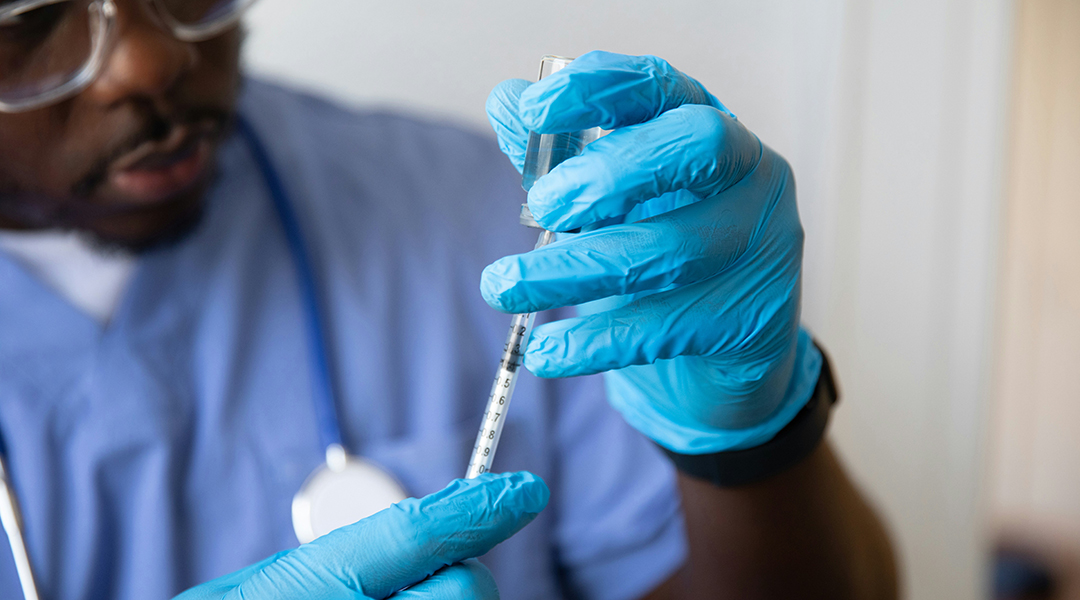Researchers are rethinking vaccine design with a new technique that enhances the effectiveness of protein subunit vaccines — those that use harmless virus or bacteria fragments to trigger an immune response — while reducing the need for immune-boosting molecules called adjuvants.
Vaccines expose the immune system to an antigen, usually a protein from a pathogen or an inactive form of a virus or bacteria, allowing immune cells to recognize it and quickly mount a defence against future exposures.
Modern vaccines also include adjuvants, which stimulate the immune cells further, enhancing the vaccines overall effectiveness.
One widely used adjuvant is CpG, a stretch of genetic material found in many pathogens but not in humans. However, when used in inhaled vaccines, CpG can sometimes cause severe reactions in the airway.
By directly coupling the protein subunit with an adjuvant called CpG oligodeoxynucleotide, this method significantly cuts down the required dosage of CpG compared to traditional approaches. This breakthrough, say the team, could improve the efficiency and safety of subunit vaccines, like those for HPV and hepatitis B.
“We are convinced that developing an inhaled vaccine containing CpG adjuvants necessitates reducing the dose of CpG adjuvants to mitigate their side effects,” said Li Zhu, researcher at the Beijing Institute of Biotechnology.
Effective vaccines at a lower dose
Mounting a defense against pathogens at their point of entry greatly increases the chance that the body repels the intruder. For respiratory pathogens, like the flu or SARS-CoV-2, this battleground is the mucosal cells of our lungs.
Reaching these cells with aerosolized, inhalable vaccines is the best way to provide this defence but common vaccine ingredients can cause immune system overreactions in lung cells. Usually, the adjuvant and antigen are mixed separately into the vaccine meaning some cells get both ingredients while others just one.
Zhu and colleagues set out to overcome the challenge of lowering the dose without losing the adjuvant’s performance-boosting effects. Their strategy was to ensure that immune cells were encountering and taking in both the antigen and adjuvant at the same time by linking them together.
“By binding the antigen and adjuvant together and ensuring they enter the same cell, we can reduce the adjuvant dose,” said Chao Pan, another member of the team at the Beijing Institute of Biotechnology. “This method not only ensures the vaccine efficacy but also reduces the adjuvant dose, enhancing safety.”
However, it’s a bit more complex than simply attaching the two molecules. If the shape and location of the linkage is not accounted for, important sites where vaccine and cells need to bind can be blocked rendering the platform less effective.
“An apt analogy is that the antigen serves as a mould for antibody production; if the shape of the mould is incorrect, the antibodies will not be produced correctly,” explained team member Hengliang Wang. Size is also a consideration, and the total package needs to be small enough to enter a cell without further packaging.
To precisely link these ingredients without the need for complex chemical reactions — which can be time consuming, costly, and may produce unintended byproducts — the team used what is essentially a “biological glue” called the Spy-Catcher/SpyTag system.
With this new technology, the researchers could easily attach a catcher to one molecule and a tag to another. The catcher and tag then link to each other at a specific location and efficiently create the desired linked molecules. The team attached the catcher to several antigens but to bind CpG to the tag molecule, another link in the chain was needed.
Building off another platform
Here the team took inspiration from a known cancer treatment, which is also designed to seek out specific cells, in this case tumors, and provoke an immune response. This treatment has three components, chunks of DNA that find and bind tumor cells, an immune system protein to instruct the body to attack the tumor and a protein called DVC which links the two.
“The concept of linking two functional molecules using DCV inspired our work,” said Zhu.
They used DVC to similarly link a strand of DNA, the CpG adjuvant, and then connected DVC to the antigens using SpyCatchter/SpyTag system. This combination of tools met the criteria of being a simple to perform set of reactions and produced a small enough product to enter the cell together.
“By using DCV to connect the adjuvant and antigen, we successfully reduced the distance between them, allowing immune cells to take up both components simultaneously,” explained Zhu.
In laboratory tests, the team confirmed that the vaccine components were binding at the correct places, creating the desired antigen-adjuvant complex. According to Zhu, this method “reduces the amount of adjuvant needed, improving safety, particularly for inhalation vaccines using CpG adjuvants. Additionally, the method ensures site-specific coupling, maintaining the correct structure of the antigen.”
The system is also suited for mass production due to the efficient and easy-to-use components, like Spy and DVC, which produce a uniform product each time.
“Dosage form research is the next focus of our work,” said Zhu. The team working on aerosolized or powdered forms to evaluate different dosages and efficiency. “Ultimately, we aim to test the system in primate animals and bring this vaccine system to clinical use.”
Reference: Yange Sun, et al., A Click-Type Enzymatic Method for Antigen-Adjuvant Conjugation, Small Methods (2024). DOI: 10.1002/smtd.202401116
Feature image credit: Unsplash

















